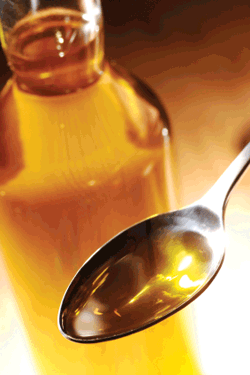
A major change in the North American diet is under way:
Heart-damaging trans fat is rapidly disappearing from grocery aisles
and restaurant food, too. But are its replacements really healthier?
 A major change in the North American diet is under way: Heart-damaging trans fat is rapidly disappearing from grocery aisles and restaurant food, too. But are its replacements really healthier?
A major change in the North American diet is under way: Heart-damaging trans fat is rapidly disappearing from grocery aisles and restaurant food, too. But are its replacements really healthier?
It is a tricky time for consumers, because the answer depends on the food – and some are losing trans fat only to have another artery clogger take its place, that old nemesis saturated fat.
“Right now the public has to be very careful … if something says ‘trans fat-free,’ what else is in it?” warns Dr. Robert Eckel, past president of the American Heart Association.
Trans fat has become the new fall guy for bad nutrition. Chain restaurants are struggling to get it off the menu after New York City and Philadelphia required restaurants to phase it out by next year. Bills to restrict or ban trans fat in restaurants or school cafeterias have been introduced in at least 20 states.
In Toronto, the city’s medical officer of health has been asked to report by September on approaches to phasing out trans fats in food establishments.
In grocery stores, many packaged foods now disclose the amount of trans fat, and the race is on to see which manufacturers can eliminate it first.
The irony: Americans eat about five times more saturated fat than trans fat. And while gram-for-gram, trans fat is considered somewhat more harmful than its cousin, too much of either greatly increases the risk of heart disease, stroke, diabetes and other ailments.
Trans fat is created when companies add hydrogen to liquid cooking oils to harden them for baking or for a longer shelf-life, turning them into partially hydrogenated oils.
There is no single substitute. So food chemists and chefs are taste-testing their way through different cooking oils and fats – both naturally occurring ones and chemically modified ones – to find replacements that don’t alter each food’s taste or texture.
What are the options? There are some heart-healthier oils, called monounsaturated and polyunsaturated oils – such as olive, canola or soybean oils. Unlike trans and sat fats, these liquid oils don’t raise levels of so-called bad cholesterol, or LDL cholesterol.
Frying chicken in canola or soybean oil instead of partially hydrogenated shortening is an easy switch.
But you can’t make, say, a pie crust with olive oil. Industry is finding that the toughest foods to rid of trans fat are baked goods, such as pastries, cookies, pizza crusts.
Substituting animal fats, such as butter or lard, or tropical oils such as palm or coconut oil may keep the taste, but they are super-high in saturated fat.
“You need to find a replacement for a solid fat that doesn’t have the health implications, and that’s the tougher battle,” says Susan Borra of the International Food Information Council. “We are changing the entire fatty acid profile of the food supply, and we’re not sure we know what it’s going to look like at the other end.”
And that’s where the concern comes in. Merely substituting saturated fat for the trans doesn’t give the food more bad fat altogether than before, but it doesn’t make it a healthy choice either, Eckel explains.
So the U.S. heart association is beginning a major campaign to teach consumers about the different fats and how to tell what foods they’re in. (It’s partly funded by a 2005 court settlement in which McDonald’s was accused of being too slow to remove trans fat.)
How much fat is too much? Federal guidelines say between 25 per cent and 35 per cent of total daily calories should come from fats, but the bad fats should make up only a fraction of that. The heart association says less than seven per cent of total calories should be saturated fat – the average American gets about 11 per cent now. Trans fat should be less than one per cent of calories, half today’s average.
A centrepiece of the heart campaign is a web-based calculator – at http://www.americanheart.org/facethefats – so consumers don’t have to do that math. It tallies just how many grams of fat people of different ages and exercise habits can fit into a day, with lists of foods that fit the bill.
For some people, a single meal of a cheeseburger and small fries would just exceed the daily limit of bad fats. Others who are taller and more active could fit in two burgers and be OK.
Many companies are searching for trans fat alternatives that are healthier than saturated fats, Borra stresses. Indeed, the heart association brought together food makers, food chemists and health experts to explore all the options last fall, and among those generating interest are different ways to blend liquid and harder fats, in hopes of reducing the artery-clogging portions.
For now, reading the food label – the Nutrition Facts panel on the back of the package, not just the “trans-free” icon on the front – is key, says Michael Jacobson of the consumer advocacy Center for Science in the Public Interest.
Print this page